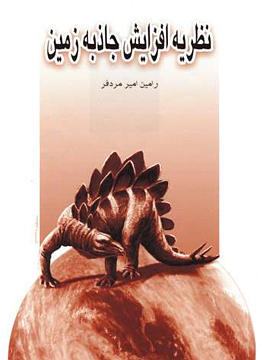The new class of animals
The new class of animals
Gravity is increasing. Animals have to build stronger blood circulation system in order to resist the increase of gravity. Mammals are thinking of making auxiliary hearts to strengthen their blood circulation system. The increase of gravity has shortened the bulk of mammals and will make them crawl or live in the sea. Those species, which have the chance of finding auxiliary heart, will be able to heighten their bulks again and stand on their feet. That�s the question: which species is more likely (chance) to do so? We have already understood that the smaller the bulk of animals would be, the higher rate of reproduction they will have. The high rate of reproductively increases the chance of finding proper mechanisms (auxiliary hearts) by animals and these animals are more likely to create a new class of animals. (Like the class of Amphibian, Reptiles, Mammals and Birds, which have come to existence from small body animals one class previous). A mouse has a higher chance of doing so. An elephant or a giraffe, however, has a meager chance of creating new class of animals. That�s the question: Whether the preliminaries of the creation of a new class of animals have been taken place?
If one was living in Triassic period and could see Reptiles and primary Mammals, together and compare them, maybe he could not find many differences among them. He would think that those species are only different types of the class of Reptiles. Anyone, who would not see the present mammals, could not recognize the primary mammals and separate them from Reptiles. Now if a person, from the future, comes to the present (a person who would have seen the new class) could easily recognize the primary animals of the new class among the present species. But, as we have not seen the new class, we can hardly recognize them. If we look deeper into the law of evolution and know its procedure, maybe, we can recognize those species that will make a new class in the future. In another words, we would be able to recognize the primary species of the new class among the Mammals. First all we know that they have smaller bulks so we must look for them among smaller mammals.
From � Book 2 � we got familiar with the principle of classification and knew that the evolution of animals goes through the stair of *populations. It means that vertebrates also have to build populations, any population like the population of insects such as the population of ants, bees and termites. Then, the social formation which will has deferent castes is the sign of evolution. If we look for evolutionary signs among the present mammals and want to recognize the primary species of the new class, we must consider this factor of evolution in our search. That�s we explore some kinds in small body mammals which be some signs of creation of population in them.
In Entomological book, it is noted that insects are the only animals, which have populations with different castes. But recently, a new type of rat called � Mole-rat � has been discovered in the East of Africa that forms population. The colony of these rats has a queen and 20 to 300 workers and soldiers. Then, we see that the mammals, too, are thinking of climbing the steps of evolution. The formation of population among these rats is an evolutionary sign. As we already knew, smaller species have higher chance of evolution. Mole-rat is a small mammal, which has colony. So it has two conditions which we were looking for. Surely we can introduce this class as the primary species of the new class and denote that this species, reaching the auxiliary hearts in the future, will create new class of animals with huge bulks.
The characteristics of the new-class animals are as follows:
1) They will have auxiliary hearts.
2) They will live in society and will have different castes.
3) They will be from small mammals like Mole-rat
